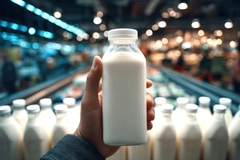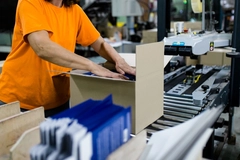DS Smith finds packages will experience g-force greater than a racecar driver this holiday season

16 Dec 2022 --- DS Smith’s latest report reveals that packages undergo g-forces of an average acceleration of around 50Gs. Packages ordered online have been recorded at g-forces akin to motor races and rocket launches.
To help understand the environments that packages must withstand to reach consumers, DS Smith is experimenting with “accelerometers” that track the speed of a package through its journey and provide data that can then explain the damage it sustains.
DS Smith found that the number of g-force packages facing this Christmas season is more intense than a formula one driver, ten times more than a roller coaster (5Gs), and five times more than what would cause an experienced astronaut to lose consciousness (9Gs).
“Our innovation and design teams are testing how fast packages travel and how they are impacted, and we then use that information to work on different designs. We use circular design principles to not only reduce damage but reduce the amount of material used so that packages protect their contents and are as [environmentally] sustainable as possible,” says Gavin Mounce, e-commerce design manager at DS Smith.
G-force damage
In the last year, 49% of British shoppers reported receiving a damaged delivery and 83 million broken deliveries. This creates challenges for businesses facing a £3.2 billion (US$3.9 million) returns bill based on those who had received a damaged item saying that, on average, the object cost £38.40 (US$46.72).
DS Smith reported that consumers have less tolerance for broken parcels, and the increased cost of living is prompting more people to return lower-value items.
 DS Smith reports that consumers are intolerant of damaged shipments. UK citizens reported that the average value that a damaged item would need to be for them to return it has decreased from £22 (US$26.78) last year to £18 US$21.91) this year, suggesting that there will be an increase in the number of returns. Similarly, 38% of UK shoppers expect free delivery and returns.
DS Smith reports that consumers are intolerant of damaged shipments. UK citizens reported that the average value that a damaged item would need to be for them to return it has decreased from £22 (US$26.78) last year to £18 US$21.91) this year, suggesting that there will be an increase in the number of returns. Similarly, 38% of UK shoppers expect free delivery and returns.
“While clearly part of everyday life, e-commerce is still a relatively new form of shopping, and we have found through our research that the conditions that packages are exposed to are volatile. Packages must be ready to travel at astonishing speeds, meaning businesses must be ready to protect products en route,” Mounce.
E-commerce rise
The most notorious reasons for the rise in shipments over the past few years have been the COVID-19 pandemic and customers’ demand for a convenient shopping experience. However, the stark rise has led packagers with challenges such as appropriate size and quantity of packaging, damaged or lost items while maintaining environmentally sustainable packaging options.
For Black Friday last month, Mondi investigated the leading e-commerce trends. The top five conclusions were: consumers named damage reduction as the most crucial detail in shipments, oversized packaging was called an annoyance, unboxing a package is also about the experience it provides, consumers are willing to pay more for packaging that suits their needs and lastly, millennials drive the market.
Additionally, during the influx of online shipments from Black Friday, DS Smith reported that the “comfort buying” trend could cost the UK £124 million (US$149 million) as a cause of the items are more likely to be made from fragile material and, therefore twice as likely to break compared to other e-commerce products.
DS Smith is searching for solutions to counteract all the packaging issues surrounding the growing e-commerce sector. Regarding g-force, balancing the amount of packaging to not over-package while providing proper protection to stop damage is a central focus. “We want new ideas, so we will look for partners to work with us on this,” concludes Mounce.
Edited by Sabine Waldeck











